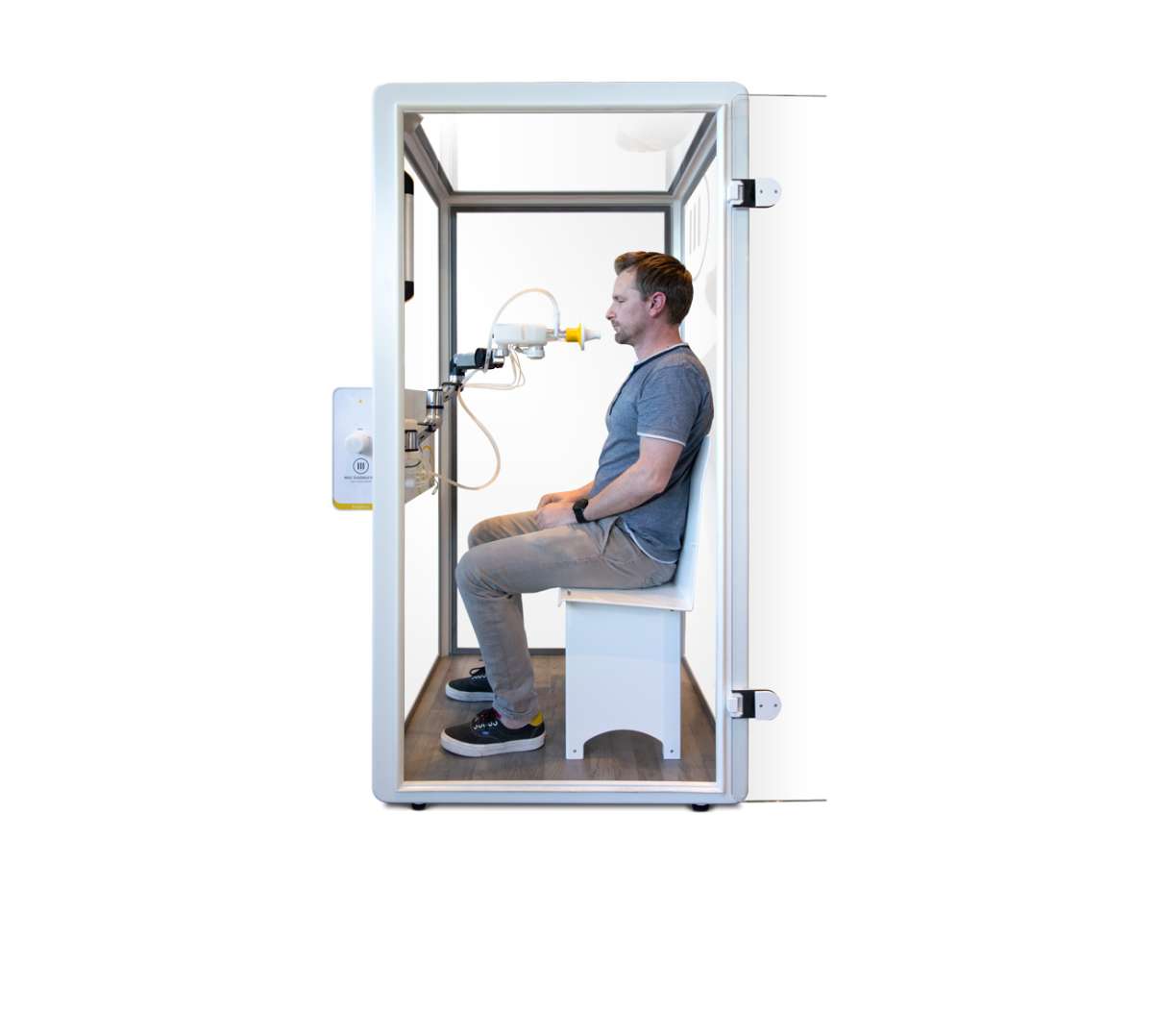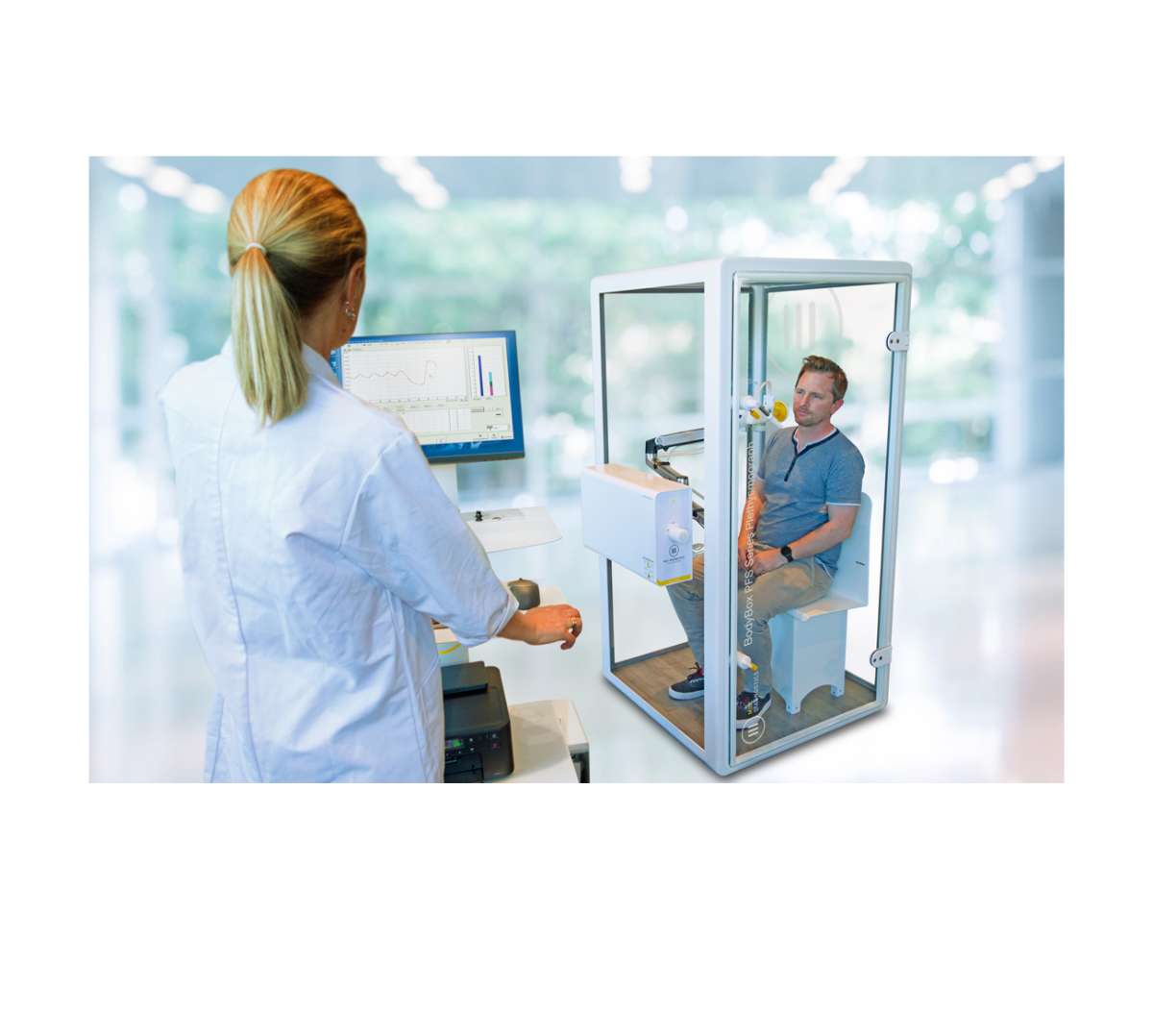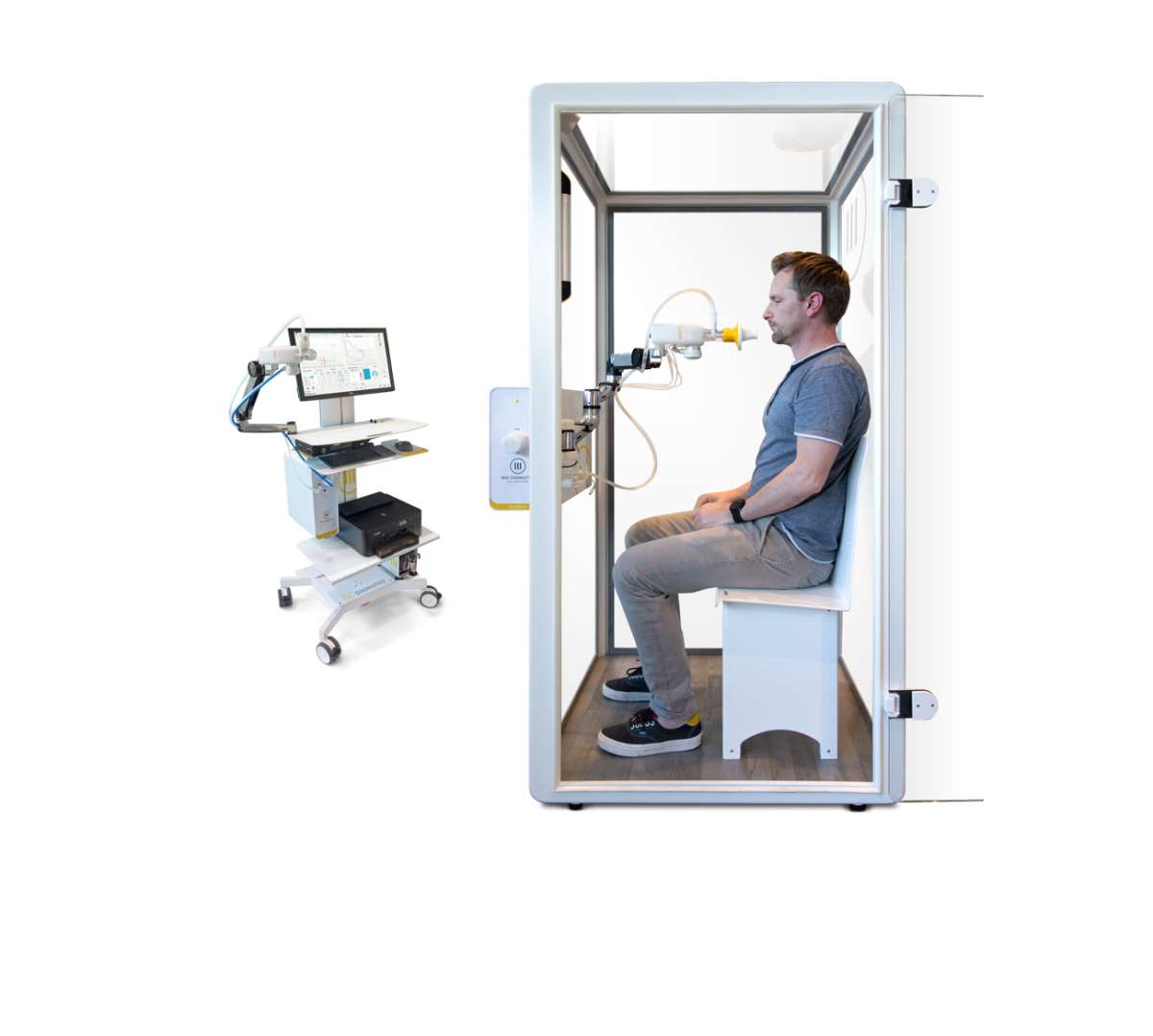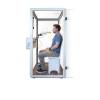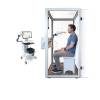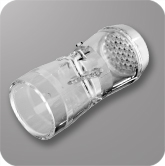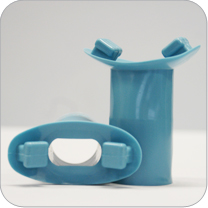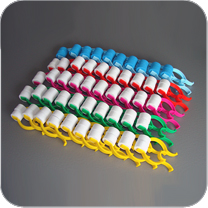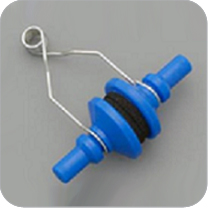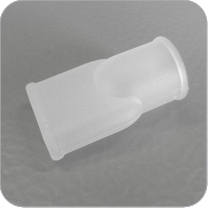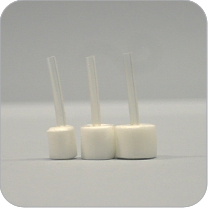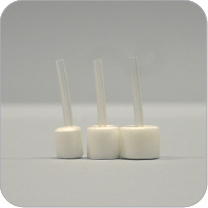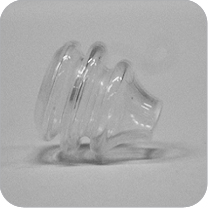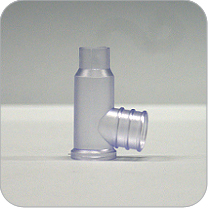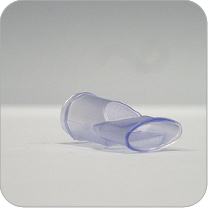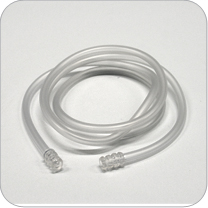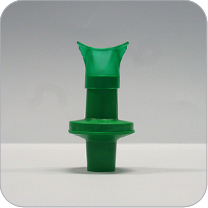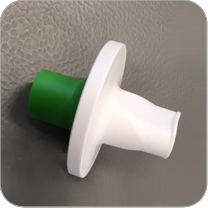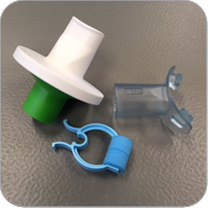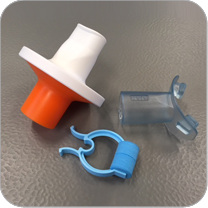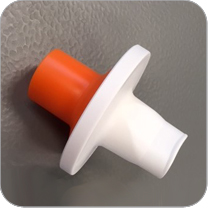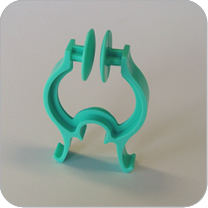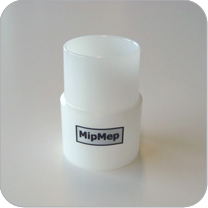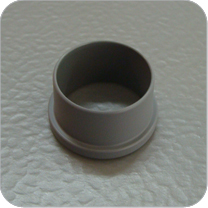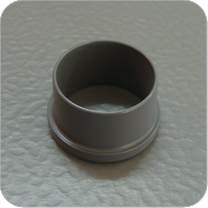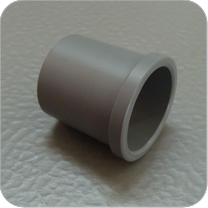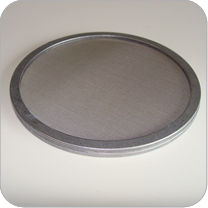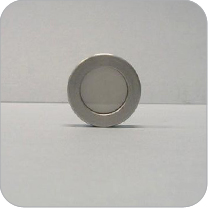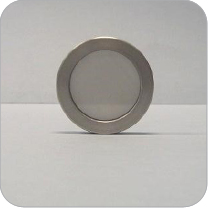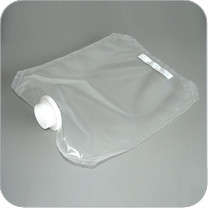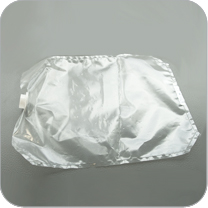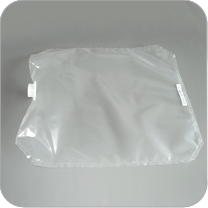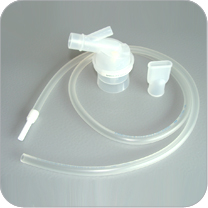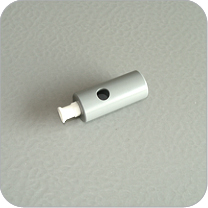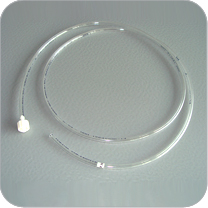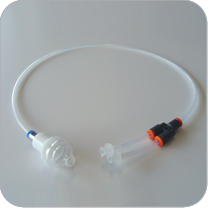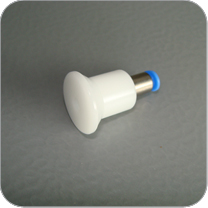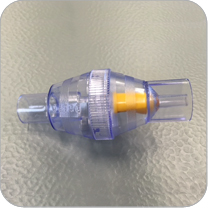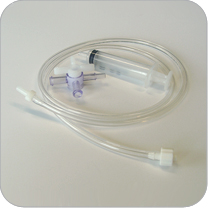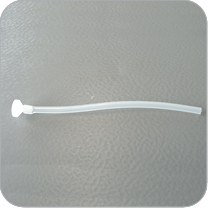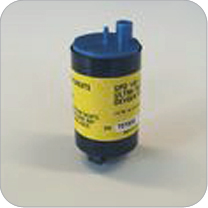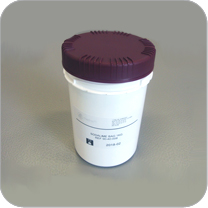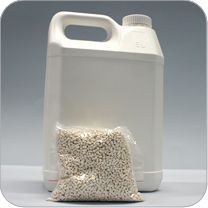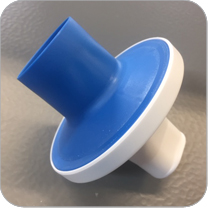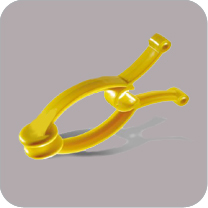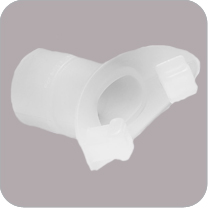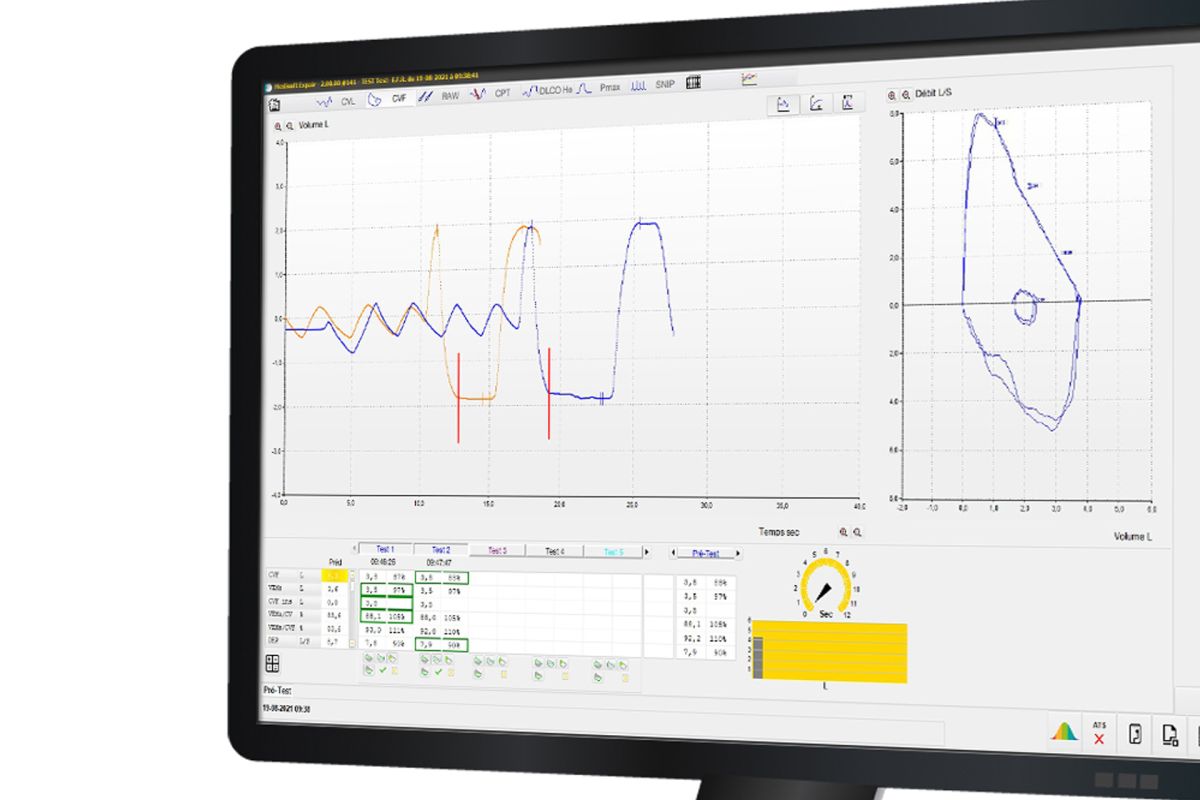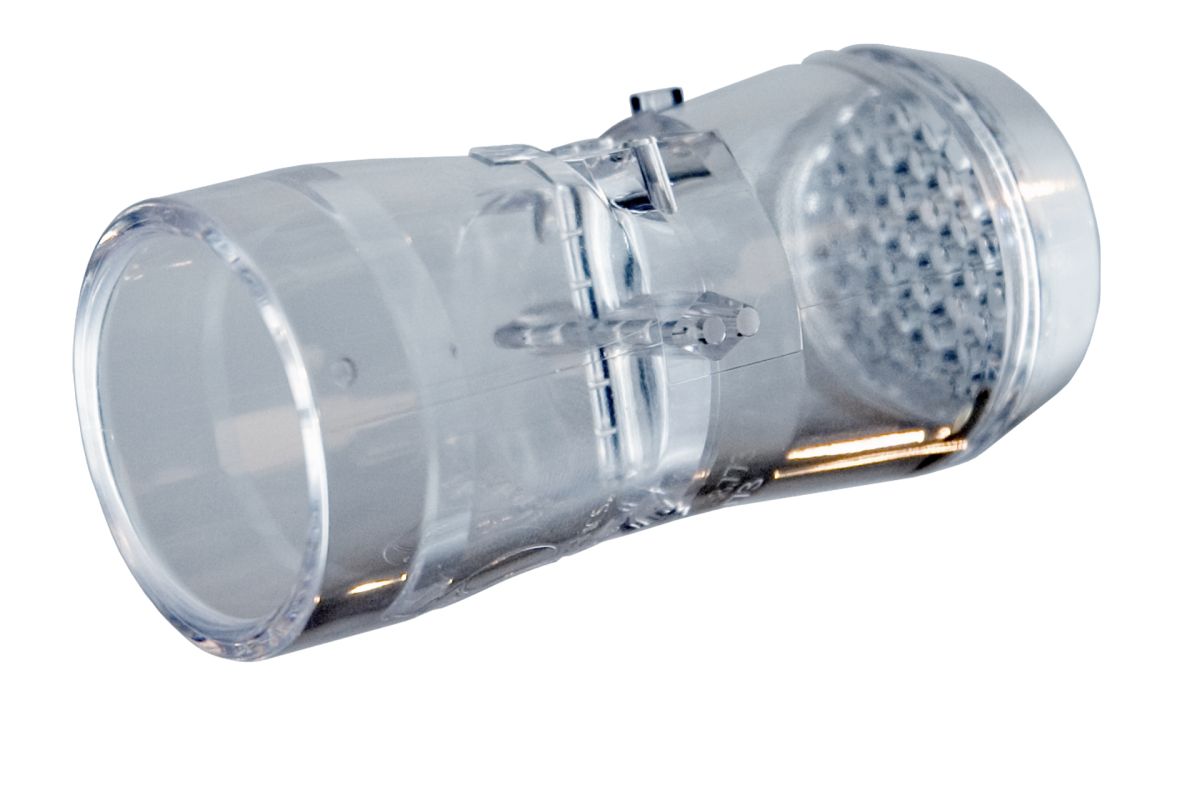The Body Plethysmograph (Bodybox) is considered the gold standard for the measurement of Functional Residual Capacity (FRC) and Lung sub-divisions, with the ability to measure both ventilated and non-ventilated lung areas. This then coupled to Airways Resistance and Spirometry with a wide range of Diffusion options and gas dilution lung volumes, provides a comprehensive testing station.
- Complete basic spirometry measurement, with Forced Vital Capacity, Slow Vital Capacity, Maximum Voluntary Ventilation and Minute Tidal Ventilation including bronchial provocation testing software.
- Thoracic Gas Volume and Lung sub-divisions (FRC-pleth, VC, IC, ERV, RV and TLC) using plethysmography technique.
- Airways Resistance measurement (RAW and sGAW): with metronome to assist the breathing process, full loop analysis with automatic and manual slope analysis.
- Completely clear, glass enclosure ensures all around visibility, the seat loading will cope with heavy and obese subjects, the enclosure is available in two sizes, Standard and XL, the new multi link patient arm allows measurements both inside an outside the cabin.
- Semi-disposable / reusable preVent® flow sensor, flow measurement from 0 to 15 l/s.
- Integrated weather station (temperature and barometric pressure) for BTPS correction of the volume.
- Low cost of operation and low maintenance.
- Expair software suite with complete operator and patient guide included
The BodyBox can be combined with the following devices:
- Micro 5000 spirometer
- Micro 6000 spirometer
- HypAir pulmonary function testing system
- SpiroAir volumetric pulmonary function testing system
- Ergocard CPX exercise testing system
- FeNO+
 Home Page
Home Page